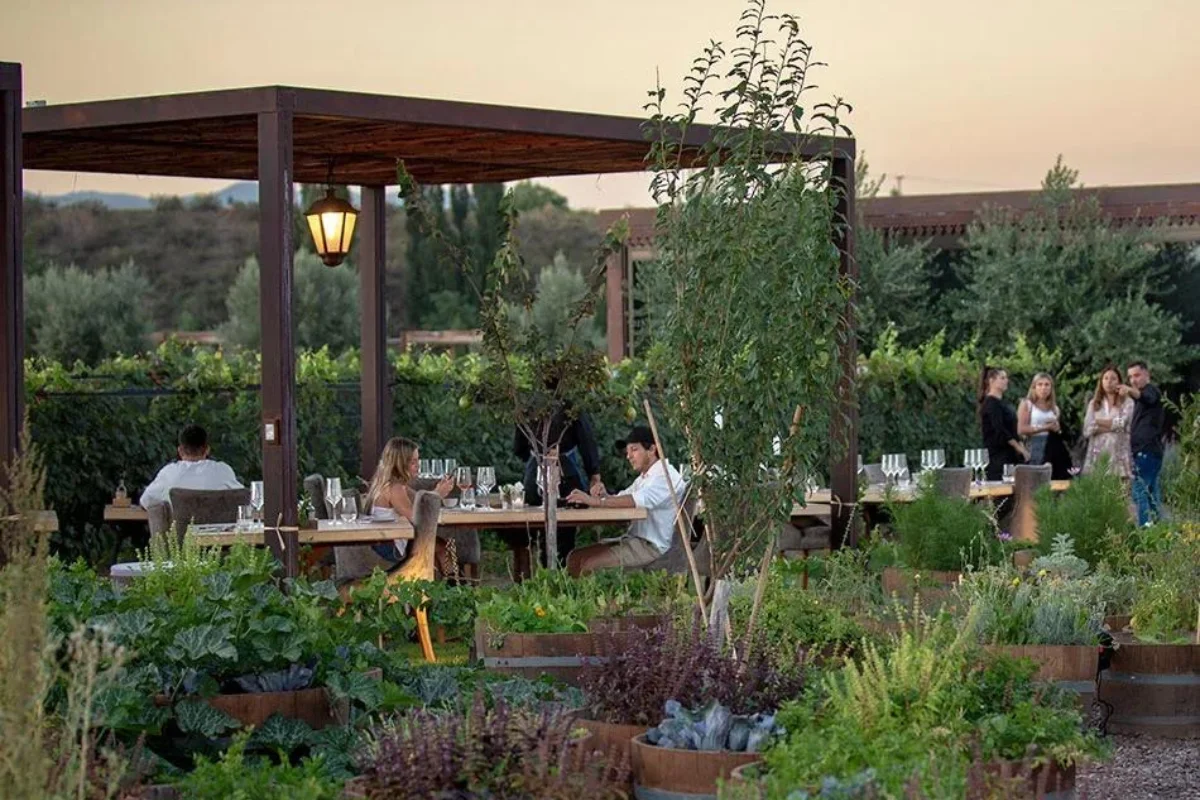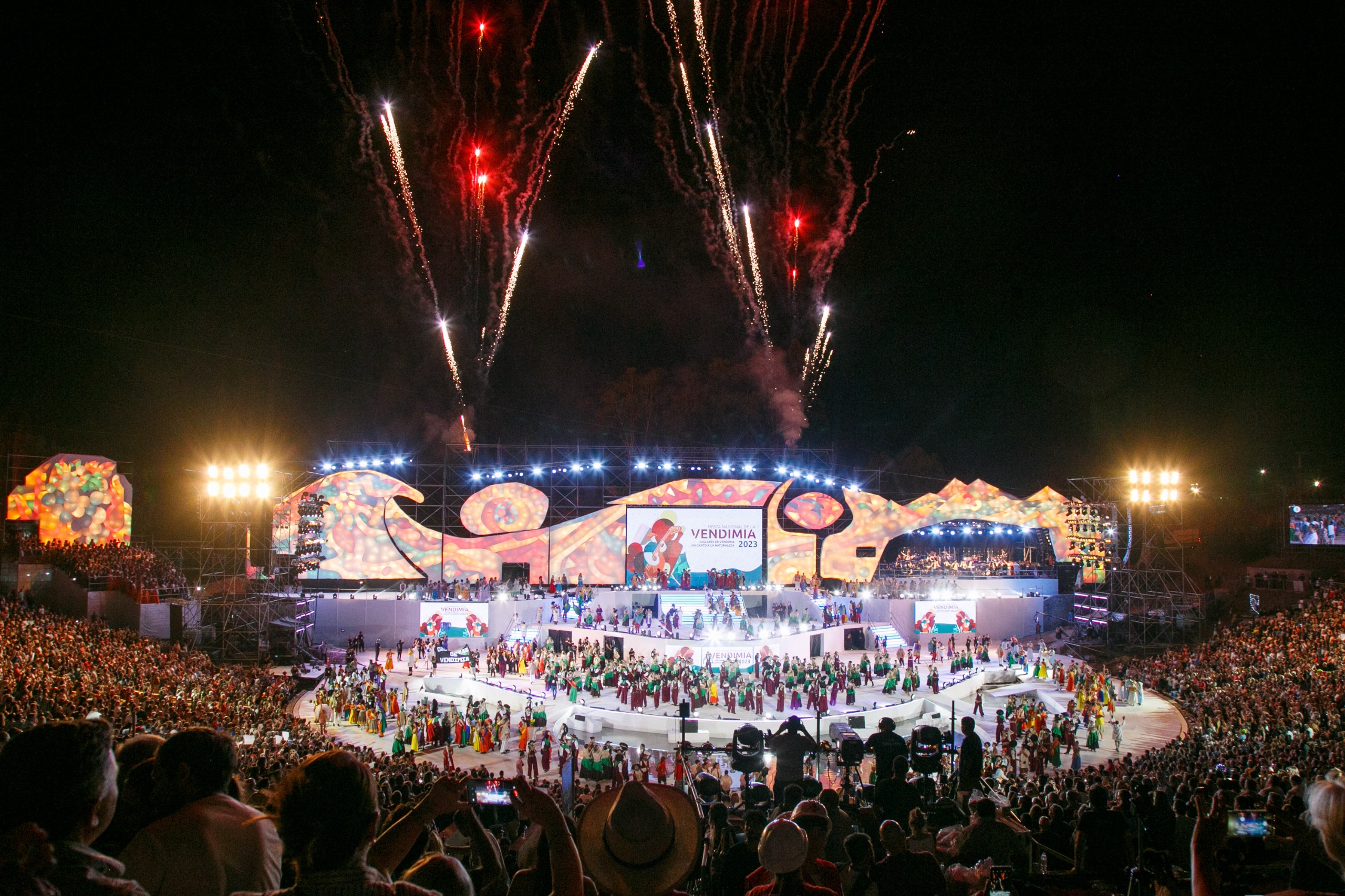Wine tourism is nowadays one of the pillars of the productive territorial development of Mendoza. According to a report prepared by the Economic Observatory of Wine Tourism, the activity has experienced sustained growth between 2018 and 2024, both in the number of wineries open to the public and in the number of visitors, the services offered and the employment generated.
The study, carried out jointly by the Mendoza Tourism Board (EMETUR) and the Argentine Wine Corporation (COVIAR), with the collaboration of different institutions and actors of the sector, provides detailed and representative information that serves as an input for decision-making in both the public and private sectors.
Gabriela Testa, president of Emetur, commented that “the Mendoza Sustainable Tourism Observatory is operating since 2000, conducting studies on supply and demand in Mendoza as a tourism destination to facilitate decision-making by the state and the private sector. In addition, we have conducted sectoral studies related to olive oil tourism, gastronomic tourism, conferences and meetings, and, especially, wine tourism. In this case, for this report, we worked together with COVIAR.”
“The Wine Tourism Economic Observatory arose from an agreement between EMETUR and COVIAR with the clear objective of understanding available supply and visitor demand. Today, this information, key to business decision-making, is available and freely accessible to all.” “It’s clear that wine tourism in Argentina hasn’t reached its ceiling; there’s an ever-increasing number of options available in the various oasis regions, making it one of the most dynamic activities,” says Pablo Asens, vicepresident of COVIAR and director in charge of the Wine Tourism executive unit. He adds: “There’s a very strong connection between tourists and winemaking.”
Mendoza’s wine tourism today

Currently, 230 wineries in the province receive visitors on a regular basis, distributed throughout the main wine regions: Luján de Cuyo, Uco Valley, Maipú, Eastern Region, Southern Region and Metropolitan Region. The survey included a representative sample of 38% of that universe, with data collected from 87 establishments.
| Wineries open to tourism and registered at INV (National Viticultural Institute) | |||
| Region | Wineries open to tourism | Wineries registered at INV | Ratio |
| Luján de Cuyo | 80 | 143 | 55,94% |
| Valle de Uco | 50 | 109 | 45,87% |
| Maipú | 42 | 121 | 34,71% |
| Southern Region | 33 | 116 | 28,45% |
| Eastern Region | 20 | 350 | 5,71% |
| Metropolitan area | 5 | 57 | 8,77% |
| Total in Mendoza | 230 | 896 | 25,67% |
Luján de Cuyo leads the ranking with 80 wineries open to tourism, followed by the Uco Valley with 50 and Maipú with 42. Although the Eastern Region has 350 wineries registered with the National Institute of Viticulture (INV), only 20 are currently open to tourism, which accounts for its high potential for development in this area.
In terms of production, the Eastern Region leads with more than 72,500 hectares cultivated and almost 5.8 million hectolitres processed, although it still has little infrastructure for tourism. In contrast, areas such as the Southern Zone – which combines wine tourism with nature and adventure activities – and the Metropolitan Region, with only five wineries open to tourism, have a more diversified offer or function as a gateway to the greater wine circuit.
Sustained growth
Between 2018 and 2024, the number of wineries open to tourism increased by 57.5%, from 146 to 230 establishments. The highest growth in absolute values was recorded in the Uco Valley and Luján de Cuyo, with 26 and 19 new wineries respectively.
This dynamism is sustained, to a large extent, by the prominence of small and micro-wine enterprises. 45.7% of tourist wineries produce between 0.5 and 5 million liters per year, while 35.4% do not exceed 500 thousand liters. This characteristic gives Mendoza’s wine tourism a strong artisanal imprint, with personalized experiences and a direct connection with the territory.
| Distribution and evolution of wineries | |||
| Region | 2018 | 2024 | Growth % |
| Luján de Cuyo | 61 | 80 | 31,15% |
| Valle de Uco | 24 | 50 | 108,33% |
| Maipú | 23 | 42 | 82,61% |
| Southern Region | 22 | 33 | 50,00% |
| Eastern Region | 11 | 20 | 81,82% |
| Metropolitan area | 5 | 5 | 0,00% |
| Total in Mendoza | 146 | 230 | 57,53% |
National and international visitors
The tourist flow has also registered sustained growth. According to the report, in 2024 there were 1,590,567 visits, 27.8% more than in 2018. 62% of the visitors were national, while 38% corresponded to international tourists, with a special presence of Brazilians, Americans (USA), Canadians and Chileans.
Luján de Cuyo continues to be the main receiving pole, while the Eastern Region showed the highest growth rate, with a 94.4% increase in the number of visits during the period analyzed.
| Evolution of visitors | |||
| Visitors in 2018 | Visitors in 2024 | Growth % | |
| 319.398 | 495.014 | 35,48% | |
| 158.272 | 326.022 | 51,45% | |
| 326.594 | 347.091 | 5,91% | |
| 332.438 | 370.860 | 10,36% | |
| 1.652 | 29.578 | 94,41% | |
| 10.340 | 22.002 | 53,00% | |
| 1.148.694 | 1.590.567 | 27,78% | |
Interesting diversity for a wide range of visitors
The range of services in Mendoza’s tourist wineries is wide and diverse. 92.7% have wine shops, while 86.4% offer guided tours and 69% include vineyard tours. More than half have gastronomic alternatives, and about 50% organize other activities such as themed tastings or blending games.
In addition, 45% of wineries are prepared for incentive tourism (MICE), and a similar proportion organize cultural and social events. Differential services such as yoga among vineyards, boutique accommodations, museums, art exhibitions, auditoriums and even spas and golf courses are also highlighted.
The orientation to the international public is reflected in the language offer: 87.8% offer service in English and 46.6% in Portuguese, in addition to other languages such as Italian, French and German.
As for the spending profile, the report indicates that the average cost for a visit with tasting amounts to 18.6 dollars, while gastronomic proposals are around 66.6 dollars. The average total expenditure per visitor is around 37 dollars.
These values show that Mendoza’s wine tourism offers options for different budgets, with a competitive quality-price ratio in the regional and international context.
Job Creation and Inclusion
One of the most relevant aspects of the report is the impact of wine tourism on the labour market. In total, 2,404 jobs are directly linked to the activity, of which 1,918 are permanent positions and 486 are temporary. Compared to 2018, permanent jobs grew by 205% and temporary jobs by 101%.
In addition, the report highlights that 35% of workers are women and 28% are under 30 years of age, which positions the sector as an inclusive area with the potential for professionalization.
| Employment in the areas of Tourism in Wineries | ||
| Region | Permanent Employees | Seasonal Employees |
| Luján de Cuyo | 30 | 27 |
| Valle de Uco | 512 | 125 |
| Maipú | 271 | 116 |
| Southern Region | 919 | 134 |
| Eastern Region | 45 | 0 |
| Metropolitan area | 141 | 84 |
| Total in Mendoza | 1918 | 486 |
Wine tourism is growing strongly in Mendoza with spectacular services, landscapes and locations.
Conclusion
The expansion of wine tourism in Mendoza confirms the value of a strategy based on territorial articulation, productive diversification and continuous improvement of quality. It not only represents a source of income and employment for regional economies, but also an effective tool for international positioning for Argentine wine and its associated culture.
The analysis presented reflects sustained growth in the number of wineries open to tourism, accompanied by an evolution in the quality and variety of services offered. This progress is complemented by a focus on sustainability and significant job creation, with special attention to the participation of women and youth, consolidating the wine tourism sector as an inclusive and dynamic sector.
Furthermore, the data collected highlights the importance of national and international tourism in the area, with a visitor profile that values both the authenticity of the experiences and the excellence of Mendoza’s wines. The average expenditure per visitor and the diversification of services, such as gastronomy and accommodation, reinforce the positive economic impact of wine tourism on local communities.

Text and Photo Credits: This article is based in the post of COVIAR by Federico Manrique and the report about Wine Tourism prepared by EMETUR (Tourism Board of Mendoza)
https://coviar.ar/todo-lo-que-hay-que-saber-sobre-el-turismo-del-vino-y-su-importancia-en-mendoza/